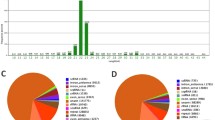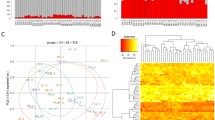Abstract
Objective
About 30% of patients with epilepsy have drug-resistant seizures. The aim of the current endeavor was to systematically review the existing evidence on the potential applications of microRNAs as biomarkers in people with difficult to treat temporal lobe epilepsy (TLE).
Methods
MEDLINE (accessed from PubMed) and Scopus from inception to March 18, 2020 were systematically searched for related published articles. In both electronic databases, the following search strategy was implemented, and these keywords (in the title/abstract) were used: “microRNA” AND “temporal lobe epilepsy.” Articles written in English that were human studies in people with epilepsy were all included in this search.
Results
We could identify 16 articles about different aspects of microRNAs in the serum of patients with TLE. However, only three studies robustly investigated microRNAs as potential biomarkers in the diagnosis of drug-resistant TLE (microRNA-155 (upregulated), microRNA-129-2-3p (upregulated), microRNA-153 (downregulated)). One small study provided class II, and two small studies provided class III evidence.
Conclusion
While this systematic review identified three studies that provided some evidence on the potential applications of circulating serum microRNAs as biomarkers in people with drug-resistant TLE, the evidence is not robust yet. While these findings provide a new horizon, substantial challenges remain before the roles of microRNAs as biomarkers in the diagnosis of drug-resistant TLE can be translated into clinical practice.

Similar content being viewed by others
References
Singh A, Trevick S (2016) The epidemiology of global epilepsy. Neurol Clin 34:837–847
Asadi-Pooya AA & Sperling MR (2016) Antiepileptic drugs: a clinician’s manual. Second Edition. New York, Oxford University Press
Kwan P, Brodie MJ (2000) Early identification of refractory epilepsy. N Engl J Med 342:314–319
Engel J Jr, McDermott MP, Wiebe S, Langfitt JT, Stern JM, Dewar S et al (2012) Early surgical therapy for drug-resistant temporal lobe epilepsy: a randomized trial. JAMA 307:922–930
Asadi-Pooya AA, Stewart GR, Abrams DJ, Sharan A (2017) Prevalence and incidence of drug-resistant mesial temporal lobe epilepsy in the United States. World Neurosurg 99:662–666
Kuzmanovski I, Cvetkovska E, Babunovska M, Kiteva Trencevska G, Kuzmanovska B, Boshkovski B, Isjanovska R (2016) Seizure outcome following medical treatment of mesial temporal lobe epilepsy: clinical phenotypes and prognostic factors. Clin Neurol Neurosurg 144:91–95
Mathon B, Bédos Ulvin L, Adam C, Baulac M, Dupont S, Navarro V, Cornu P, Clemenceau S (2015) Surgical treatment for mesial temporal lobe epilepsy associated with hippocampal sclerosis. Rev Neurol (Paris) 171(3):315–325
Englot DJ, Ouyang D, Garcia PA, Barbaro NM, Chang EF (2012) Epilepsy surgery trends in the United States, 1990-2008. Neurology 78(16):1200–1206
Radhakrishnan A, Menon R, Thomas SV, Abraham M, Vilanilam G, Kesavadas C, Thomas B, Cherian A, Varma RP (2018) “Time is Brain”-how early should surgery be done in drug-resistant TLE? Acta Neurol Scand 138:531–540
Jimenez-Mateos EM, Henshall DC (2013) Epilepsy and microRNA. Neuroscience 238:218–229
Henshall DC (2014) MicroRNA and epilepsy: profiling, functions and potential clinical applications. Curr Opin Neurol 27:199–205
Hutton B, Salanti G, Caldwell DM, Chaimani A, Schmid CH, Cameron C, Ioannidis JPA, Straus S, Thorlund K, Jansen JP, Mulrow C, Catalá-López F, Gøtzsche PC, Dickersin K, Boutron I, Altman DG, Moher D (2015) The PRISMA extension statement for reporting of systematic reviews incorporating network meta-analyses of health care interventions: checklist and explanations. Ann Intern Med 162:777–784
Moher D, Liberati A, Tetzlaff J, Altman DG, PRISMA Group (2009) Preferred reporting items for systematic reviews and meta-analyses: the PRISMA statement. PLoS Med 6:e1000097
Gronseth GS, Cox J, Gloss D, Merillat S, Dittman J, Armstrong MJ, et al. on behalf of the Guideline Development (2017) Dissemination, and Implementation Subcommittee of the American Academy of Neurology. Clinical practice guideline process manual, 2017 ed. Minneapolis, MN: The American Academy of Neurology
Avansini SH, de Sousa Lima BP, Secolin R, Santos ML, Coan AC, Vieira AS, Torres FR, Carvalho BS, Alvim MKM, Morita ME, Yasuda CL, Pimentel-Silva LR, Dogini DB, Rogerio F, Cendes F, Lopes-Cendes I (2017) MicroRNA hsa-miR-134 is a circulating biomarker for mesial temporal lobe epilepsy. PLoS One 12:e0173060
Duan W, Chen Y, Wang XR (2018) MicroRNA-155 contributes to the occurrence of epilepsy through the PI3K/Akt/mTOR signaling pathway. Int J Mol Med 42:1577–1584
Gong GH, An FM, Wang Y, Bian M, Wang D, Wei CX (2018) Comprehensive circular RNA profiling reveals the regulatory role of the CircRNA-0067835/miR-155 pathway in temporal lobe epilepsy. Cell Physiol Biochem 51:1399–1409
Li Y, Huang C, Feng P, Jiang Y, Wang W, Zhou D, Chen L (2016) Aberrant expression of miR-153 is associated with overexpression of hypoxia-inducible factor-1α in refractory epilepsy. Sci Rep 6:32091
Manna I, Labate A, Mumoli L, Pantusa M, Ferlazzo E, Aguglia U, Quattrone A, Gambardella A (2013) Relationship between genetic variant in pre-microRNA-146a and genetic predisposition to temporal lobe epilepsy: a case-control study. Gene 516:181–183
Raoof R, Bauer S, El Naggar H, Connolly NMC, Brennan GP, Brindley E et al (2018) Dual-center, dual-platform microRNA profiling identifies potential plasma biomarkers of adult temporal lobe epilepsy. EBioMedicine 38:127–141
Sun Y, Wang X, Wang Z, Zhang Y, Che N, Luo X, Tan Z, Sun X, Li X, Yang K, Wang G, Luan L, Liu Y, Zheng X, Wei M, Cheng H, Yin J (2016) Expression of microRNA-129-2-3p and microRNA-935 in plasma and brain tissue of human refractory epilepsy. Epilepsy Res 127:276–283
Surges R, Kretschmann A, Abnaof K, van Rikxoort M, Ridder K, Fröhlich H, Danis B, Kaminski RM, Foerch P, Elger CE, Weinsberg F, Pfeifer A (2016) Changes in serum miRNAs following generalized convulsive seizures in human mesial temporal lobe epilepsy. Biochem Biophys Res Commun 481:13–18
Xiao W, Cao Y, Long H, Luo Z, Li S, Deng N, Wang J, Lu X, Wang T, Ning S, Wang L, Xiao B (2018) Genome-wide DNA methylation patterns analysis of noncoding RNAs in temporal lobe epilepsy patients. Mol Neurobiol 55:793–803
Yan S, Zhang H, Xie W, Meng F, Zhang K, Jiang Y, Zhang X, Zhang J (2017) Altered microRNA profiles in plasma exosomes from mesial temporal lobe epilepsy with hippocampal sclerosis. Oncotarget 8:4136–4146
Antônio LGL, Freitas-Lima P, Pereira-da-Silva G, Assirati JA Jr, Matias CM, Cirino MLA, Tirapelli LF, Velasco TR, Sakamoto AC, Carlotti CG Jr, Tirapelli DPC (2019) Expression of microRNAs miR-145, miR-181c, miR-199a and miR-1183 in the blood and hippocampus of patients with mesial temporal lobe epilepsy. J Mol Neurosci 69:580–587
De Matteis M, Cecchetto G, Munari G, Balsamo L, Gardiman MP, Giordano R et al (2018) Circulating miRNAs expression profiling in drug-resistant epilepsy: Up-regulation of miR-301a-3p in a case of sudden unexpected death. Leg Med (Tokyo) 31:7–9
Manna I, Labate A, Borzì G, Mumoli L, Cavalli SM, Sturniolo M, Quattrone A, Gambardella A (2016) An SNP site in pri-miR-124, a brain expressed miRNA gene, no contribution to mesial temporal lobe epilepsy in an Italian sample. Neurol Sci 37:1335–1339
Shen CH, Zhang YX, Zheng Y, Yang F, Hu Y, Xu S, Yan SQ, Ding Y, Guo Y, Ding MP (2019) Expression of plasma microRNA-145-5p and its correlation with clinical features in patients with refractory epilepsy. Epilepsy Res 154:21–25
Gong GH, An FM, Wang Y, Bian M, Wang D, Wei CX (2018) MiR-153 regulates expression of hypoxia-inducible factor-1α in refractory epilepsy. Oncotarget 9:8542–8547
Raoof R, Jimenez-Mateos EM, Bauer S, Tackenberg B, Rosenow F, Lang J, Onugoren MD, Hamer H, Huchtemann T, Körtvélyessy P, Connolly NMC, Pfeiffer S, Prehn JHM, Farrell MA, O’Brien DF, Henshall DC, Mooney C (2017) Cerebrospinal fluid microRNAs are potential biomarkers of temporal lobe epilepsy and status epilepticus. Sci Rep 7:3328
Fan X, Heijnen CJ, van der Kooij MA, Groenendaal F, van Bel F (2009) The role and regulation of hypoxia-inducible factor-1alpha expression in brain development and neonatal hypoxic-ischemic brain injury. Brain Res Rev 62:99–108
Wang G, Xie G, Han L, Wang D, Du F, Kong X et al (2019) Involvement of hypoxia-inducible factor-1 alpha in the upregulation of P-glycoprotein in refractory epilepsy. Neuroreport 30:1191–1196
Tang F, Hartz AMS, Bauer B (2017) Drug-resistant epilepsy: multiple hypotheses. Few Answers. Front Neurol 8:301
Tishler DM, Weinberg KI, Hinton DR, Barbaro N, Annett GM, Raffel C (1995) MDR 1 gene expression in brain of patients with medically intractable epilepsy. Epilepsia 36:1–6
Feldmann M, Asselin MC, Liu J, Wang S, McMahon A, Anton-Rodriguez J, Walker M, Symms M, Brown G, Hinz R, Matthews J, Bauer M, Langer O, Thom M, Jones T, Vollmar C, Duncan JS, Sisodiya SM, Koepp MJ (2013) P-glycoprotein expression and function in patients with temporal lobe epilepsy: a case-control study. Lancet Neurol 12(8):777–785
Volk HA, Burkhardt K, Potschka H, Chen J, Becker A, Loscher W (2004) Neuronal expression of the drug efflux transporter P-glycoprotein in the rat hippocampus after limbic seizures. Neuroscience 123:751–759
Asadi-Pooya AA, Razavizadegan SM, Abdi-Ardekani A, Sperling MR (2013) Adjunctive use of verapamil in patients with refractory temporal lobe epilepsy: a pilot study. Epilepsy Behav 29:150–154
Huang LG, Zou J, Lu QC (2018) Silencing rno-miR-155-5p in rat temporal lobe epilepsy model reduces pathophysiological features and cell apoptosis by activating Sestrin-3. Brain Res 1689:109–122
Li TR, Jia YJ, Wang Q, Shao XQ, Zhang P, Lv RJ (2018) Correlation between tumor necrosis factor alpha mRNA and microRNA-155 expression in rat models and patients with temporal lobe epilepsy. Brain Res 1700:56–65
Zupcic SG, Zupcic M, Duzel V, Simurina T, Sakic L, Grubjesic I, Tonković D, Udovic IS, Ferreri VM (2020) The potential role of micro-RNA-211 in the pathogenesis of sleep-related hypermotor epilepsy. Med Hypotheses 143:110115
Alsharafi W, Xiao B (2015) Dynamic expression of MicroRNAs (183, 135a, 125b, 128, 30c and 27a) in the rat pilocarpine model and temporal lobe epilepsy patients. CNS Neurol Disord Drug Targets 14:1096–1102
Henshall DC, Hamer HM, Pasterkamp RJ, Goldstein DB, Kjems J, Prehn JHM, Schorge S, Lamottke K, Rosenow F (2016) MicroRNAs in epilepsy: pathophysiology and clinical utility. Lancet Neurol 15:1368–1376
https://en.wikipedia.org/wiki/Antagomir/ accessed on April 2, 2020.
Zhang H, Lian Y, Xie N, Cheng X, Chen C, Xu H, Zheng Y (2020) Antagomirs targeting miR-142-5p attenuate pilocarpine-induced status epilepticus in mice. Exp Cell Res 393:112089
Henshall DC (2017) Manipulating MicroRNAs in murine models: targeting the multi-targeting in epilepsy. Epilepsy Curr 17:43–47
Funding
The Epilepsy Research Center, Shiraz University of Medical Sciences supported this study.
Author information
Authors and Affiliations
Contributions
Study Design: Ali A. Asadi-Pooya MD; Data collection: Ali A. Asadi-Pooya, MD; Amir Tajbakhsh, PhD, and Amir Savardashtaki, PhD; statistical analysis:--; data interpretation: Ali A. Asadi-Pooya, MD and Amir Tajbakhsh, PhD; manuscript preparation: Ali A. Asadi-Pooya, MD, Amir Tajbakhsh, PhD, and Amir Savardashtaki, PhD; literature search: Ali A. Asadi-Pooya, MD, Amir Tajbakhsh, PhD, and Amir Savardashtaki, PhD; funds collection: Ali A. Asadi-Pooya, MD.
Corresponding author
Ethics declarations
Conflict of interest
Ali A. Asadi-Pooya: Honoraria from Cobel Daruo, Tekaje, and RaymandRad; Royalty: Oxford University Press (Book publication); grant from the National Institute for Medical Research Development. The other authors declare that they have no conflict of interest.
Ethical approval
None
Additional information
Publisher’s note
Springer Nature remains neutral with regard to jurisdictional claims in published maps and institutional affiliations.
Appendix
Appendix
Rights and permissions
About this article
Cite this article
Asadi-Pooya, A.A., Tajbakhsh, A. & Savardashtaki, A. MicroRNAs in temporal lobe epilepsy: a systematic review. Neurol Sci 42, 571–578 (2021). https://doi.org/10.1007/s10072-020-05016-x
Received:
Accepted:
Published:
Issue Date:
DOI: https://doi.org/10.1007/s10072-020-05016-x




